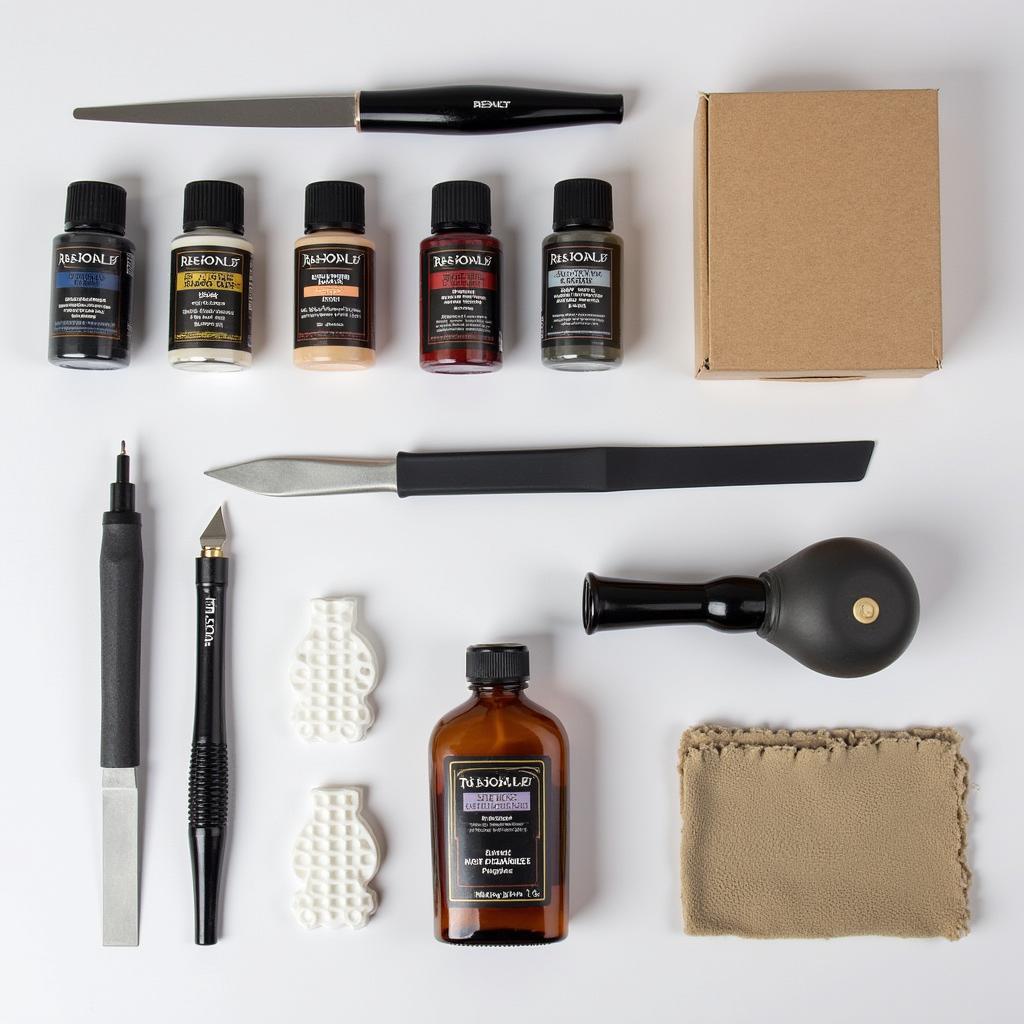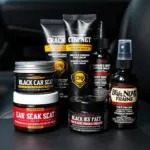Reupholstering your car seats can be an expensive endeavor. Knowing how to repair upholstery car seats yourself can save you a considerable amount of money and leave your car’s interior looking its best. This guide will cover everything you need to know about DIY car upholstery repair, from assessing the damage to choosing the right materials and techniques.
Assessing the Damage: What Are You Dealing With?
The first step in any car upholstery repair is to assess the damage. This will help you determine the best course of action and gather the appropriate materials. Common types of car seat damage include:
- Burns: These can be caused by cigarettes, hot objects, or even sunlight.
- Tears: Sharp objects, pets, and even normal wear and tear can cause tears in your car’s upholstery.
- Cracks: Leather seats are particularly susceptible to cracking, often due to age and exposure to sunlight.
- Fading: Over time, the color of your car’s upholstery can fade due to sunlight exposure.
- Stains: Spills and dirt can leave unsightly stains on your car seats.
Once you’ve identified the type of damage you’re dealing with, you can move on to choosing the right repair method.
DIY Car Upholstery Repair Methods
There are a variety of DIY car upholstery repair methods available, each suited to different types of damage:
1. Repairing Minor Burns and Tears
For small burns and tears, you can often achieve great results with a dedicated car upholstery repair kit. These kits typically include a color-matching compound that can be used to fill in the damaged area.
Here’s a step-by-step guide:
- Clean the area: Use a mild cleaner and a microfiber cloth to clean the damaged area and allow it to dry completely.
- Apply the filler: Carefully apply the color-matched filler compound to the damaged area, using a palette knife to smooth it out.
- Heat and texture: If your kit includes a heat transfer tool, use it to heat the filler and create a matching texture.
- Apply sealant (optional): Some kits include a sealant that can be applied to protect the repair and enhance its longevity.
Can you repair leather car seats using this method? Absolutely! Leather repair kits follow a similar process, often utilizing liquid leather fillers for a seamless finish.
2. Dealing with Larger Tears and Rips
Larger tears and rips in your car’s upholstery may require a more involved approach. You have two main options:
- Sewing: If you’re comfortable with a needle and thread, you can sew the tear closed. Use a heavy-duty thread that matches the color of your upholstery.
- Patching: For larger tears, consider using a patch. You can purchase upholstery patches online or at a fabric store. Choose a patch that closely matches the color and texture of your upholstery. Secure the patch with fabric glue or by sewing it in place.
For detailed instructions on repairing specific types of tears, refer to our guides: “How to Repair Torn Fabric Car Seat” and “How to Repair Ripped Front Seat in Car” for comprehensive information.
3. Addressing Cracks in Leather Seats
Cracks in leather car seats can be addressed using a leather repair kit. These kits typically include a liquid leather filler that can be used to fill in the cracks and a colorant to restore the original color.
Follow these steps:
- Clean the area: Thoroughly clean the cracked area with a leather cleaner to remove dirt and grime.
- Apply the filler: Use a palette knife or a similar tool to apply the liquid leather filler to the cracks. Ensure a smooth and even finish.
- Apply the colorant: Once the filler dries, apply the colorant according to the kit’s instructions.
- Condition the leather: After the repair, apply a leather conditioner to protect the repaired area and keep the leather supple.
Wondering, “how much to repair small tear in leather car seat”? While costs vary, DIY repairs with a car leather seat repair cream black are often significantly cheaper than professional services.
4. Restoring Faded Upholstery
Faded upholstery can be restored with a fabric or leather dye.
- Clean the upholstery: Before dyeing, thoroughly clean the upholstery with a suitable cleaner to remove dirt and debris.
- Apply the dye: Follow the dye manufacturer’s instructions for application. Use a spray bottle or a sponge brush to apply an even coat.
- Let it dry: Allow the dye to dry completely before using your car.
5. Removing Stains
Stains on car upholstery can be removed with a variety of household cleaners.
- Upholstery cleaner: Use a dedicated upholstery cleaner for best results.
- Baking soda paste: Create a paste with baking soda and water, apply it to the stain, and let it sit for a few hours before vacuuming it up.
- Vinegar solution: Mix equal parts white vinegar and water in a spray bottle. Spray the solution onto the stain, blot it with a clean cloth, and repeat until the stain is gone.
Always test any cleaning solution on a hidden area of your upholstery first to ensure it doesn’t damage the fabric or leather.
Tips for Successful Car Upholstery Repair
Keep these tips in mind for a successful DIY car upholstery repair:
- Act quickly: Address damage as soon as possible to prevent it from worsening.
- Match colors carefully: Choose repair materials that closely match the color and texture of your car’s upholstery for a seamless look.
- Work in a well-ventilated area: Many upholstery repair products emit fumes, so ensure proper ventilation.
- Be patient: Take your time and work carefully to achieve the best results.
When to Call a Professional
While many car upholstery repairs can be tackled with DIY methods, some situations warrant professional help:
- Extensive damage: For large tears, extensive burns, or widespread damage, a professional upholsterer will have the skills and tools for a proper restoration.
- Airbag deployment: If your car’s upholstery has been damaged due to airbag deployment, it’s crucial to have a professional assess and repair it to ensure the airbags will function correctly in the future.
Conclusion
Knowing how to repair upholstery car seats can save you money and keep your car’s interior looking its best. By following the tips and techniques outlined in this guide, you can tackle most minor repairs yourself. However, remember to contact a professional for extensive damage or issues related to safety-critical components like airbags.
FAQs
Q: Can I use regular fabric dye on car upholstery?
A: While it might seem tempting, it’s best to use dyes specifically designed for car upholstery. These are formulated to bond well with automotive fabrics and resist fading caused by sunlight exposure.
Q: How can I prevent future damage to my car seats?
A: Simple steps like using seat covers, parking in the shade whenever possible, and addressing spills promptly can significantly prolong the life of your car’s upholstery.
Q: My leather seats feel dry and stiff. What should I do?
A: Regular cleaning and conditioning are essential for maintaining leather car seats. Use a dedicated leather conditioner to keep the material supple and prevent cracks.
Q: I’m unsure about the right color match for my upholstery. What are my options?
A: Most reputable car upholstery repair kits offer a range of color options. You can also contact the car manufacturer or a specialized retailer for assistance in finding the perfect match.
Q: Is it worth repairing car upholstery before selling my car?
A: Absolutely! A well-maintained car interior, including the upholstery, can significantly increase your car’s resale value.
For more information on car maintenance and repairs, explore our other informative articles on CarRepairOnline! Need personalized assistance? Contact us via WhatsApp: +1(641)206-8880, or email us at: cardiagtechworkshop@gmail.com. Our team is available 24/7 to answer your queries and provide expert guidance.


